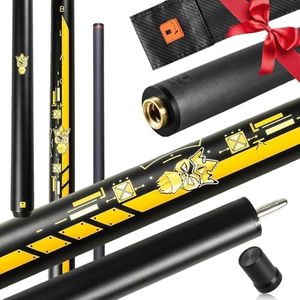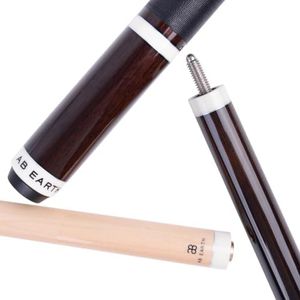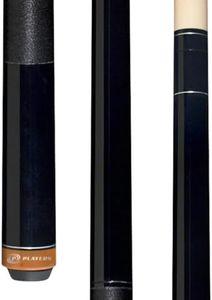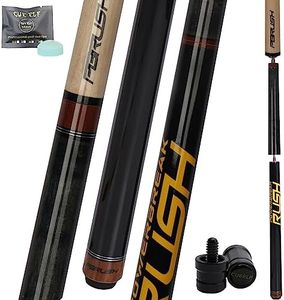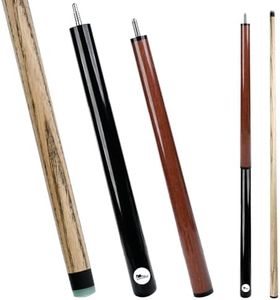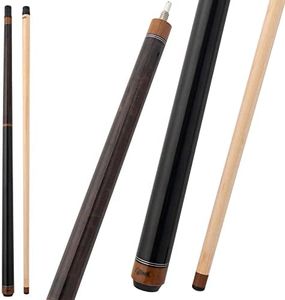We Use CookiesWe use cookies to enhance the security, performance,
functionality and for analytical and promotional activities. By continuing to browse this site you
are agreeing to our privacy policy
10 Best Jump Cues
From leading brands and best sellers available on the web.Buying Guide for the Best Jump Cues
Choosing the right jump cue can really elevate your billiards or pool game, especially when it comes to the specialized shots that require jumping. A jump cue is designed differently from your regular playing cue to help you lift the cue ball over obstacles, and the right one can make those tricky shots much easier to perform. When shopping for a jump cue, it's important to know which features will best support your playing style and how you'll most commonly use the cue. Understanding these key specs will help you find a cue that feels comfortable, is easy to control, and fits your needs, whether you're just learning to jump or already attempting advanced tricks.Cue WeightCue weight refers to how heavy the jump cue is, typically measured in ounces. A lighter cue, usually between 6 and 9 ounces, allows for quicker wrist action, making it easier to generate the speed needed for effective jumps. Heavier cues might offer more power but are harder to control and can reduce precision, especially for beginners. If you are just starting to practice jump shots, a lighter cue will help you get the technique right, while advanced players might experiment with slightly heavier cues for added force.
Cue LengthJump cues are generally shorter than regular cues, often ranging from about 40 to 48 inches. The shorter length helps make quick, controlled movements when jumping the cue ball. Shorter cues (closer to 40 inches) are easier for quick, close jumps and for players with smaller stature or those who like more control, while longer cues offer a bit more reach, which can help on jumps farther from the cue ball. Think about how comfortable you are with shorter sticks and whether you often face jump shots that require extra reach.
Tip HardnessThe tip of the jump cue is usually made harder than those found on standard cues, often using very hard leather or synthetic materials. Hard tips transfer energy more efficiently, making it easier to pop the ball into the air. Extremely hard tips are great for higher jumps but require precision, while slightly softer hard tips give a bit more control. If you’re still learning to master your jump shots, start with a standard hard tip, and only move to ultra-hard tips as your accuracy improves.
Shaft TaperThe shaft taper is the way the cue narrows from the thicker end to the tip. Jump cues often have a stiff and relatively straight (conical) taper, which helps generate the explosive force needed to lift the ball. A stiff shaft is preferable for jump cues because it offers little flex, allowing for more direct energy transfer. If you like consistency in the way the cue hits, look for cues with a pronounced straight taper. This is less about personal style and more about making the technical side of jumping easier.
Joint TypeJump cues may come in one, two, or even three pieces, with joints connecting the sections. Quick-release joints are especially popular as they let you assemble or break down the cue quickly during a game. More pieces can make the cue more portable and sometimes allow different jumping options (such as shorter or longer configurations), while a simple two-piece joint is reliable and fast to set up. If you travel often or value flexibility, having a cue that breaks down into more pieces will be beneficial.
Grip MaterialUnlike standard cues, some jump cues come without a traditional wrap or grip, giving a smoother feel for quick wrist movement and flexibility during jump shots. Others may have a light wrap or different materials for better hold. If your hands tend to slip or sweat, a mild grip can offer confidence, but for many players, the unwrapped handle helps with agility and speed. Choose what feels secure and comfortable during fast motions, as this will influence your jumping accuracy.
